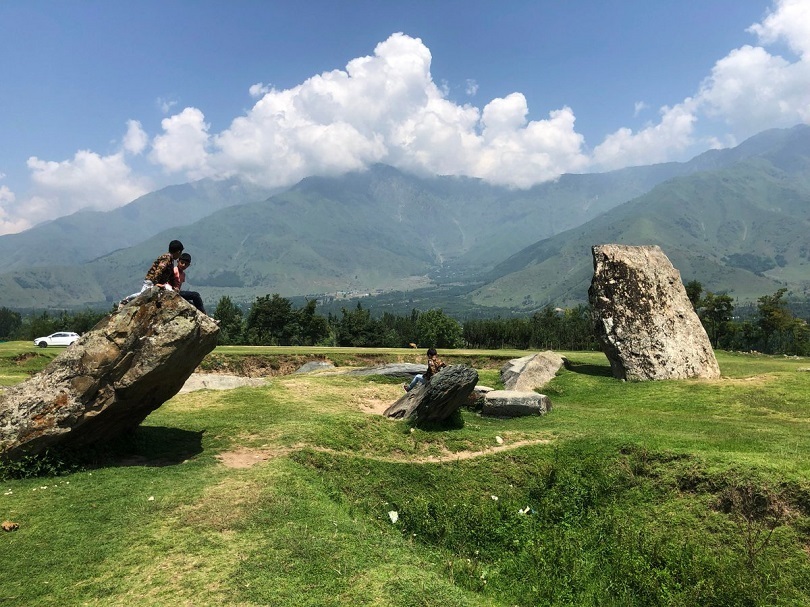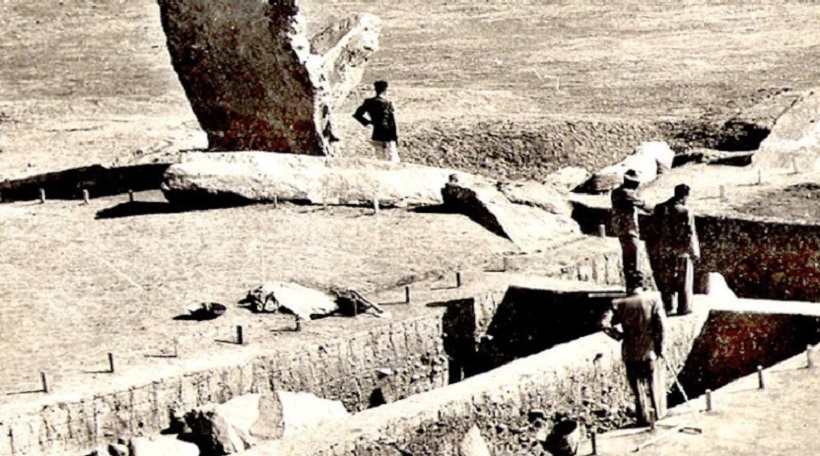
Located some 15km from the city centre of Srinagar, Burzahom, translating to birch trees in the local language, is the very first site where evidence of prehistoric human settlements in the valley had been traced.
But sadly, what can be observed today is that such a “neolithic revolution” site is on the fringe of deterioration and decay. Many archaeologists and historians in the valley have expressed dissatisfaction with the authorities handling of the site over the years.
Saleem Beg, convener of Indian National Trust for Art and Cultural Heritage(INTACH) says to his dismal “Burzoham is a very important prehistoric, archaeological site that has been converted to a sports field now.” He expressed his concern with the larger issue of the Archeological survey of India’s (ASI) presence in Kashmir.
Beg mentioned there are over 59 significant prehistoric sites in Jammu and Kashmir which are controlled by the Sringar circle of ASI. “But in the 1990s, ASI had closed their office in the valley and shifted to Jammu and never came back. Obviously if the circle isn’t back, officers do not sit here, how do one accept the sites to be protected!,” wonders Beg.
Ajmal Shah, archaeologist and Assistant Professor at the University of Kashmir explains the significance of Burzahom, “It is one of the best recognised sites of the neolithic period not only in South Asian but across the world because of its unique nature of having a certain vast amount of artefacts on its excavations.”
“The material culture retrieved through archaeological excavations point towards the fact that Kashmir has been a meeting place for Central and South Asian cultures,” Shah further adds. Much of what is known about the site today to archaeologists and historians is because of the seven seasons of excavations that happened during the 1960-70s by the ASI. The site was first discovered by de Terra and Paterson conducted by the Yale-Cambridge Expedition around 1935 because of the presence of megalithic structures around it.
“Even after so many years, the huge problem is that the site report is still not published by the ASI. We know very little about Burzahom and its material findings compared to what could have been known if the report was published,” mentions Shah.
Talking about its present situation, Shah said for a couple of years a huge cricket tournament is taking place on the actual site.
“Youngsters are going and playing a major local league on the archaeological mount which is gathering a huge crowd of spectators . Playing and levelling the ground with huge rollers is a major concern for the archaeological structures beneath and will create major problems for people who might further extract the site in future as only 20 percent of the site has been extracted at present.”
Shah mentioned in fact ASI is responsible for its present situation as they are not fencing the area even after money has been allotted for it.
“Even after it is a protected archaeological land situated in a plateau, two-three years back the Tourism Department of Kashmir has constructed a road till the top of the mount. It’s an easy a minute or two walk from the main road to the actual site and the expansion of a new road to the actual site was not at all needed. It is creating a lot of problems as the cricketers and spectators are now bringing their vehicles at the top upto the site,” reveals Shah.

Construction is usually not allowed at sites of such archaeological value but it is a matter of serious doubts how the ASI permitted the state authorities to blacktop the area which is illegal in the law books.
Talking about the attitude of locals towards the site, Shah says, “During my regular visits to the site I met a lot of locals who are willing to provide support to the government for its preservation. Many people are not aware about its significance and in these many years no one from the authorities have come forward to sensitised or make the locals understand what they are doing is not permissible, so they are not bothering much.”
Similarly, Beg echoed the same concerning the locals, “There are two things. Firstly, there are no open playgrounds around for the youngsters and then it is not a fenced site. Secondly, there is nothing on the surface such as a sign, site museum, or restoration centre which can say it is a place of importance, and it is left like an open ground.”
Beg further added, “What they usually do for prehistoric sites after the excavations is to cover it with a proper structure after documentation which is the standard archaeological practice but here it is left unfenced and unprotected so locals find it as a huge open space to play tournaments. A proper preserved site with a museum would have helped to sensitize the locals that they should not intervene.”
Beg feels it is the carelessness of the local authorities and administration which has pushed the site to the periphery of ruination.
Shah even started an online campaign on change.org called Save Burzahom-Save Cultural Heritage of Jammu & Kashmir which garnered a lot of support and even a civil society had filed a Public Interest Litigation in the high court of J&K but events after 5 August 2019 in the state has certainly caused indefinite hindrances to such moves.
In a state which is already in constant turmoil and political uncertainties, the lack of severe accountability and negligence on the hands of the authorities raises important pertinent questions about the future and preservation of such an internationally recognised Neolithic site which goes on to represent the history, identity and cultural significance of the people of J&K and one can only be hopeful and optimistic that the angst of many historians and archaeologists like Saleem Beg and Ajmal Shah lead to some action from the higher authorities or it is would a really sad state of affairs to see places of such historical significances spanning over thousands of years slowly perishing.
Follow this link to join our WhatsApp group: Join Now
Be Part of Quality Journalism |
Quality journalism takes a lot of time, money and hard work to produce and despite all the hardships we still do it. Our reporters and editors are working overtime in Kashmir and beyond to cover what you care about, break big stories, and expose injustices that can change lives. Today more people are reading Kashmir Observer than ever, but only a handful are paying while advertising revenues are falling fast. |
| ACT NOW |
| MONTHLY | Rs 100 | |
| YEARLY | Rs 1000 | |
| LIFETIME | Rs 10000 | |







